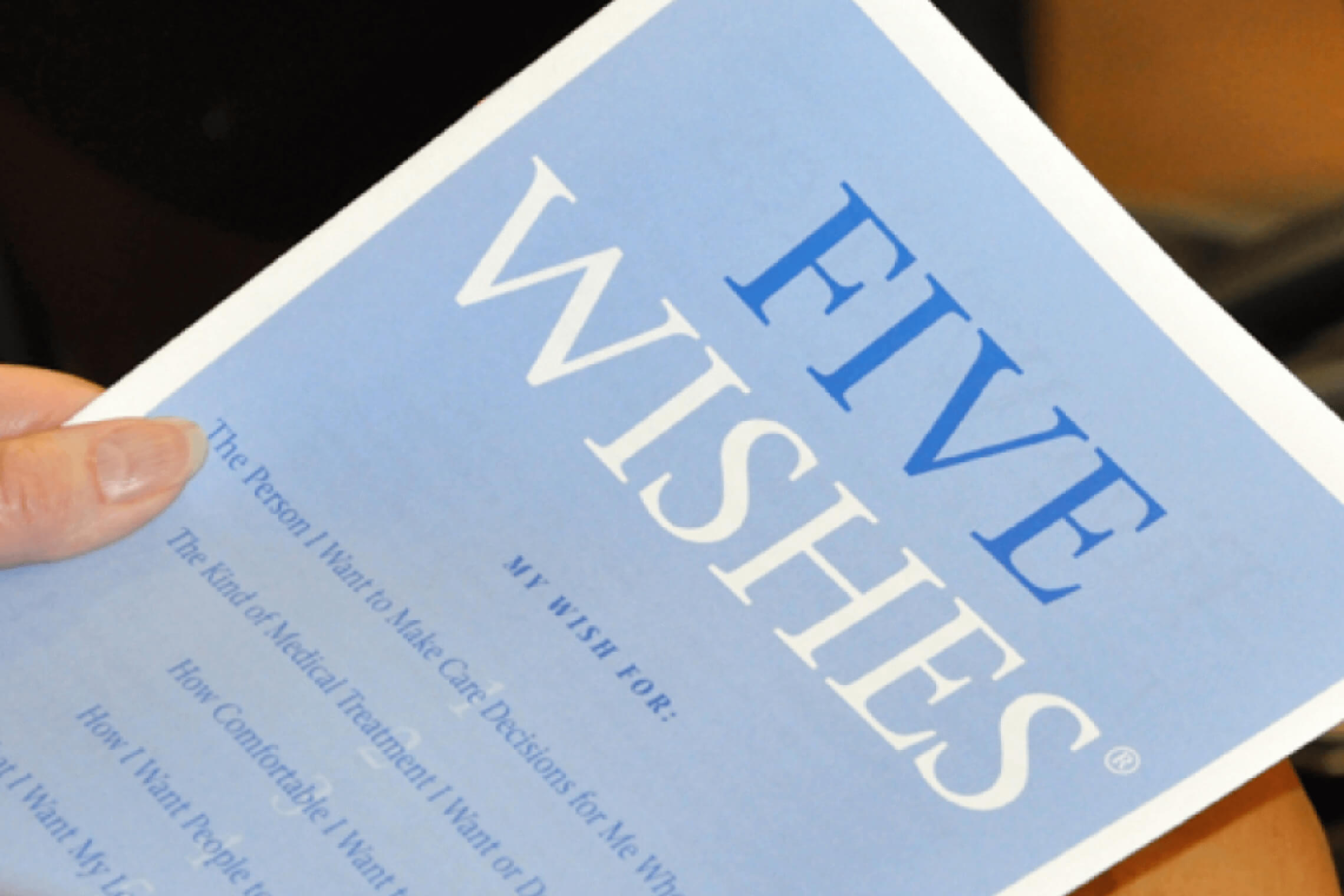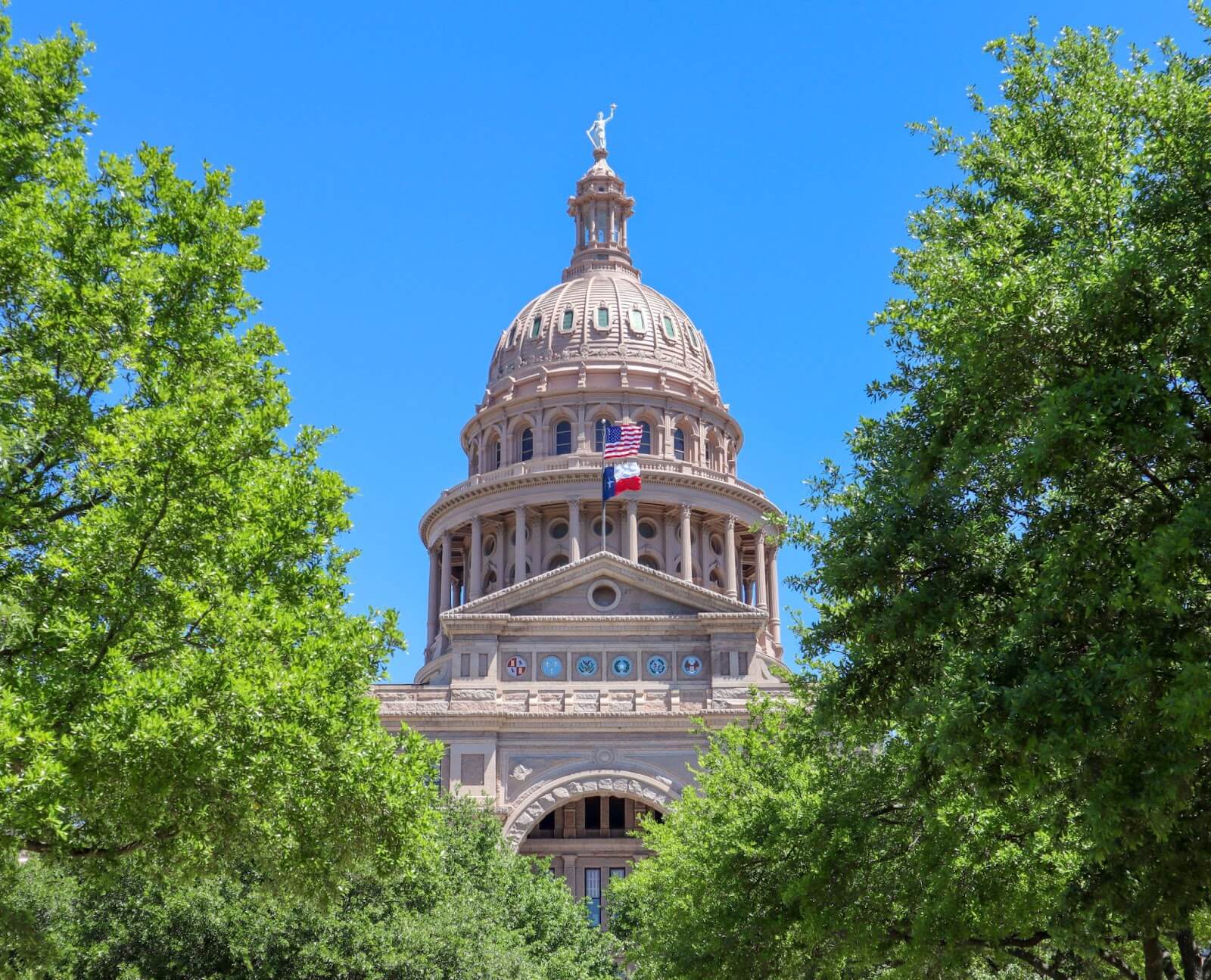The Five Wishes is an estate planning tool that enables individuals to express their end-of-life wishes and make their preferences known in a clear way. Developed by the non-profit organization Aging with Dignity, the Five Wishes document includes a series of questions that cover personal, emotional, and spiritual matters in addition to medical and legal issues.
In this blog post, we will explain the Five Wishes estate planning questions and discuss the pros and cons of using the Five Wishes document.
**FastWill strongly advises you to use a legal document that is recognized in your state that avoids some of the ambiguities in the Five Wishes document.**
The Five Wishes
Who do you want to make healthcare decisions for you?
The first question is arguably the most important one: who do you want to make healthcare decisions on your behalf if you are unable to do so yourself? Whenever you are considering end of life care, it’s essential to name a healthcare agent. This has to be someone you trust to make important medical decisions for you since they will be responsible for making critical choices about your care and treatment if you are unable to do it yourself. It is also important to consider your healthcare agent's willingness and ability to carry out your wishes, as well as their proximity to you when making this decision.
What kind of medical treatment do you want or not want?
The second wish deals with medical treatment, including end-of-life care, resuscitation, life support, pain management, and other medical interventions. The Five Wishes document lets you specify the kind of medical treatment you prefer, such as the use of a feeding tube or ventilator, and whether you would like to be resuscitated in the event of cardiac arrest. The idea here is that you can help your loved ones and healthcare providers by simply making your wishes known.
How comfortable do you want to be?
The third wish addresses comfort measures, including pain management, spiritual and emotional support, and other forms of comfort care. The Aging With Dignity organization believes patients have the right to decide the kind of medical treatment they want or don’t want when they are gravely ill. It is important to consider not just your medical treatment but also your emotional and spiritual needs, particularly as you near the end of your life. Your preferences in these areas can be as critical to your well-being as the medical treatment you receive.
How do you want people to treat you?
The fourth wish addresses personal and emotional matters, including how you want to be treated by others, who should be allowed to visit you, and whether you would like your loved ones to be present at the time of your death. This wish allows you to express your preferences for end-of-life care in a way that honors your values and beliefs, while also helping your loved ones to understand how they can best support you.
What do you want your loved ones to know?
The fifth and final wish addresses issues related to legacy and personal relationships, including forgiveness, the expression of love and gratitude, and the legacy you would like to leave behind. It provides an opportunity for you to express your wishes and feelings about how you want to be remembered.
Drawbacks of the Five Wishes Model of Estate Planning
The Five Wishes provide a holistic approach to end-of-life planning that is meant to address your values, beliefs, and priorities. While the Five Wishes estate planning document is a helpful tool for some people, it is important to be aware of its limitations.
The Five Wishes Document is Not Legally Binding Everywhere
One drawback is that the Five Wishes is not a legally recognized document in all states. While it is legally recognized in most states, some states require specific forms or legal language to be used in order for end-of-life wishes to be legally binding. That’s why FastWill recommends only using the Five Wishes document as a tool to help you create legally binding forms - a Will, Trust, Advanced Directive, and Power of Attorney document that complies with the laws in your state. This is the best way to ensure that your end-of-life wishes are legally enforceable.
The Five Wishes Document Promotes a Specific Religious Dogma
The Five Wishes is the brainchild of James Towey, who was once the White House Director of Faith-Based Initiatives Under George W. Bush. The Five Wishes incorporates Towey’s religious belief that it is never permissible to intend death, but it is permissible to take action you know will cause death. This is a concept that comes from St. Thomas Acquinas.
The doctrine is often applied in cases involving pain relief at the end of life. For example, a doctor may administer a high dose of pain medication to a terminally ill patient to relieve their suffering, even if the medication also has the unintended effect of hastening the patient's death. The doctor's action is justifiable because the intention was to relieve the patient's pain and suffering, not to cause their death, and because the relief of the patient's suffering outweighs the unintended consequence of hastening their death.
Some people find this standard too restrictive and some find it too permissive. If it lines up with your own beliefs, you may find this document helpful, but helps to be aware of the philosophies that inform the five wishes.
The Five Wishes Document is Ambiguous
Wish Number 2, "My Wish For the Kind of Medical Treatment I Want Or Don't Want” incorporates the religious dogma mentioned above. It includes the statement "I do not want anything done or omitted by my doctors or nurses with the intention of taking my life.” The form lists medical interventions that are used to keep a person alive and allows the person to check a box stating "I do not want life-support treatment."
If you say you do not want life support, someone may object that withdrawing life support obviously “intends” death. Hospitals are wary of these sorts of conflicts and will always err on the side of medical interventions that keeps a person alive. This is something to be aware of since many hospitals are affiliated with churches that have specific guidelines about care.
For example, what if a doctor determines that the person has severe brain damage and will soon die? When the doctor and family look at the Five Wishes document, they see that the person said she wanted life support while close to death, but no life support if there was brain damage? Those are two conflicting wishes. If there is disagreement among family members or health providers, who decides which wish takes priority? A judge may wind up being the decision-maker, which defeats the purpose of end-of-life planning.
The Five Wishes is a One-Size-Fits-All Document
The Five Wishes is a one-size-fits-all document that may not be appropriate for individuals with complex medical conditions or unique situations. In these cases, it may be necessary to consult with a healthcare provider or other medical professional to develop a more personalized end-of-life plan.
The Five Wishes is Emotionally Challenging
Finally, some individuals may find the process of completing the Five Wishes to be emotionally challenging or uncomfortable. The questions asked in the Five Wishes are deeply personal and may prompt you to confront difficult emotions and decisions. While we think it’s important to consider end-of-life issues, not everyone is ready to do so. The Five Wishes shouldn’t be a barrier to making a will or trust that distributes your assets.
Our Advice: Use Legally Binding Forms from Your State
Our advice is that the Five Wishes document is most effective as a conversation starter for you and your family. It can help inform your thinking and prepare you to create your estate plan, including advanced directives, power of attorney forms, and other important documents. Use FastWill to make plans that are specifically tailored to your situation and comply with all the requirements of state law.





